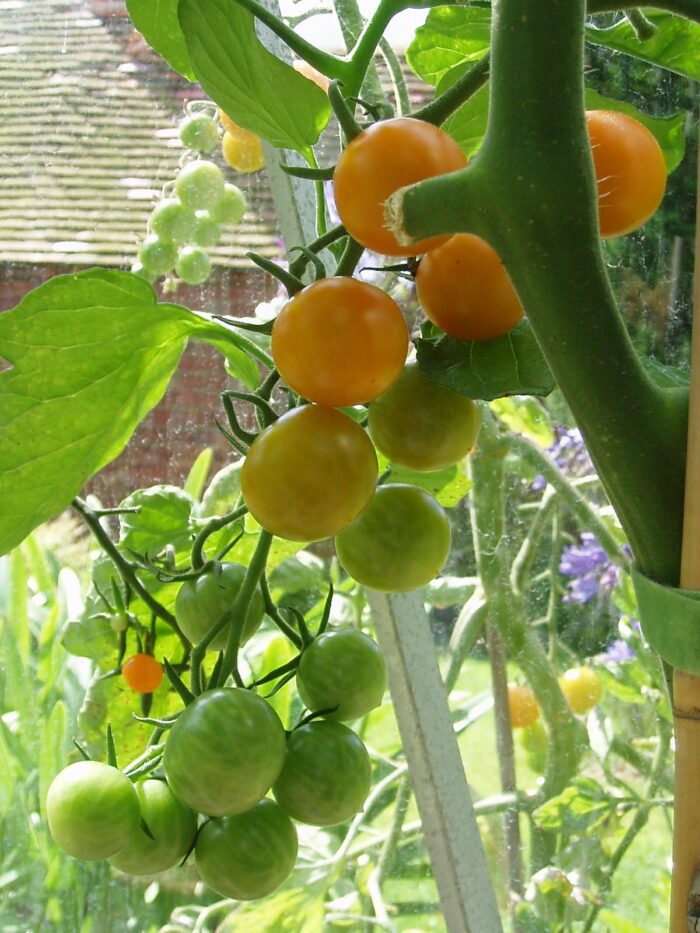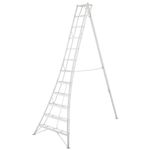A Basic Primer on Tomato Terms
When choosing tomato plants consider habit and disease-resistance

Choosing tomato plants isn’t necessarily tricky. Still, most people only think of two things when they consider purchasing tomato plants for their home garden. They ask themselves what size (regular or cherry)? Next, they decide how many plants to buy. That’s it.
There are a couple of other factors that may guide you in how to decide what tomato plant varieties to choose. One of them is the difference between determinate plants and indeterminate plants. This detail tells you the growth habit of that particular tomato. The second thing to consider is disease-resistance.
Find out the difference between determinate and indeterminate tomato plants
A determinate tomato plant’s habit is to grow into a bush. Once determinate plants reach a certain size (3 to 4 feet), they bloom and set fruit. After that, they’re pretty much done. One reason someone would choose a determinate plant is because they don’t want to mess with a lot of staking (although you still would be smart to toss a cage around them). Plus, these plants don’t need to be pruned.
An indeterminate plant is a true vine and continues to grow forever and beyond (up to 12 feet) if you don’t do a little pruning once in a while. These guys can take up a lot of space, and that could be a nuisance to some people. They need to be trellised throughout the season and pruned regularly.
That said, the indeterminates have a lot going for them. For one, they have a much higher fruit yield and the tomatoes are bigger as well as better. You’ll get a lot more yield per square foot with these crazy vine types as they continue to produce fruit up until a hard frost kills them. The bottom line for taste is that the indeterminates win every time. Most heirloom tomato plants are indeterminate, and that should tell you something.
Discover how to find a disease-resistant tomato variety
When purchasing tomato plants, you may have seen these letters on the plant’s tag next to the variety name. Sometimes it’ll be “VFF” or VFN.” Have you ever wondered what those letters are telling you? Should you even care? Well, it all depends if your growing zone encourages certain diseases or not and if incredible flavor turns you into a risk-taker.
Each one of the letters stands for a different disease that tomato plants can be prone to developing. Tomato scientists have bred and produced tomato plant varieties that can resist these diseases. If you buy a tomato plant that has the letter “V” next to its name, such as “‘Oregon Spring’ V,” this tells you that the disease the plant is bred to resist is verticillium wilt, which commonly attacks tomato crops.
V = verticillium wilt
F and FF = fusarium wilt
N = nematodes
T = tobacco mosaic virus
A = alternaria leaf spot
The question of whether or not to buy the cultivated disease-resistant plants for me is all about flavor. The tomatoes with the most outstanding taste are the heirloom varieties that have no such man-made resistance. When you grow heirlooms, you just take your chances—which is why every year I grow way too many tomato plants for our family. I’m always planting in fear of some fatal disease knocking out the majority of my tomatoes; this fear has never actually materialized, yet I persist in stocking up.
| More on managing tomato pests and diseases |
| More on pruning, heirlooms, and tomato supports • Why It’s Important to Prune Tomatoes • Get to Know Heirloom Tomatoes • The Supporting Cast for Tomatoes |
Fine Gardening Recommended Products

Berry & Bird Rabbiting Spade, Trenching Shovel
Fine Gardening receives a commission for items purchased through links on this site, including Amazon Associates and other affiliate advertising programs.

Hasegawa Tripod Ladder
Fine Gardening receives a commission for items purchased through links on this site, including Amazon Associates and other affiliate advertising programs.

SHOWA Atlas 370B Nitrile Palm Coating Gloves, Black, Medium (Pack of 12 Pairs)
Fine Gardening receives a commission for items purchased through links on this site, including Amazon Associates and other affiliate advertising programs.







Comments
Log in or create an account to post a comment.
Sign up Log in